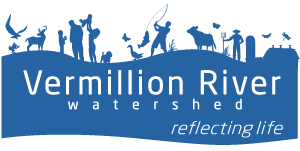What does wetland alteration mean?
Wetland alteration is any action that can change the extent or function of a wetland. Examples of activities that could be wetland alterations include drainage or tiling, filling, excavation, diversion of water to or from the wetland, or changing the types of plants in the wetland.
Wetland alteration and its impacts will be determined by a wetland delineation, which is the process of determining the actual physical boundaries of the wetland by evaluating hydrology (the presence, movement, distribution, and properties of water), vegetation, and soils at the site. Wetland delineation also includes an assessment of the wetland’s functions and how valuable it is.
When do wetland alteration requirements apply?
Whenever there is a proposed activity (such as drainage or excavation) that may affect a wetland.
What are the requirements?
Any wetland alteration must comply with the Minnesota Wetland Conservation Act (WCA) and other applicable State and Federal regulations.
If a wetland alteration is being performed under an exemption or “no loss” determination under the WCA, a proposed excavation in type 1, 2, 6, or 7 wetlands must demonstrate a beneficial purpose. (See below for a definition of these wetland types.) These include habitat or water quality improvement and must minimize loss of wetland function.
A wetland determined to be a high quality wetland (through a state-accepted assessment method) may not be used for stormwater management and treatment unless the use will not adversely affect the function and value of the wetland and alternatives do not exist.
If a wetland is being replaced or mitigated, siting must follow the priority order below:
- Mitigation on-site
- Mitigation within the same minor subwatershed as established by the Minnesota Department of Natural Resources
- Mitigation within the VRWJPO boundary
- Mitigation within Dakota or Scott County
Transportation projects shall pursue wetland mitigation projects to the extent practical using the criteria above. However, this does not preclude the use of the Minnesota Board of Water & Soil Resources (BWSR) Local Government Road Wetland Replacement Program.
Wetland type definitions
- Type 1 wetlands are either seasonally flooded basins or floodplains. Vegetation varies according to the season and the amount of flooding.
- Type 2 wetlands are wet meadows. The soil is without standing water during most of the growing season, but is saturated below the
- Type 3 wetlands are shallow marshes. The soil is usually waterlogged early in the spring and often covered with six or more inches of water.
- Type 4 wetlands are deep marshes. The soil is usually covered with water during spring and summer— anywhere from six inches to three feet.
- Type 5 wetlands are open water wetlands, including shallow ponds and reservoirs. The water is less than six feet deep and fringed by a border of emergent vegetation.
- Type 6 wetlands are shrub swamps. Soil is usually waterlogged during much of the growing season, and is often covered with as much as six inches of water.
- Type 7 wetlands are wooded swamps. Soil is waterlogged to within a few inches of the surface during the growing season, and can be covered with as much as a foot of water.
- Type 8 wetlands are bogs. Soil is usually waterlogged and has a spongy covering of mosses.
(Definitions excerpt from BWSR publication “Minnesota Wetlands“)


